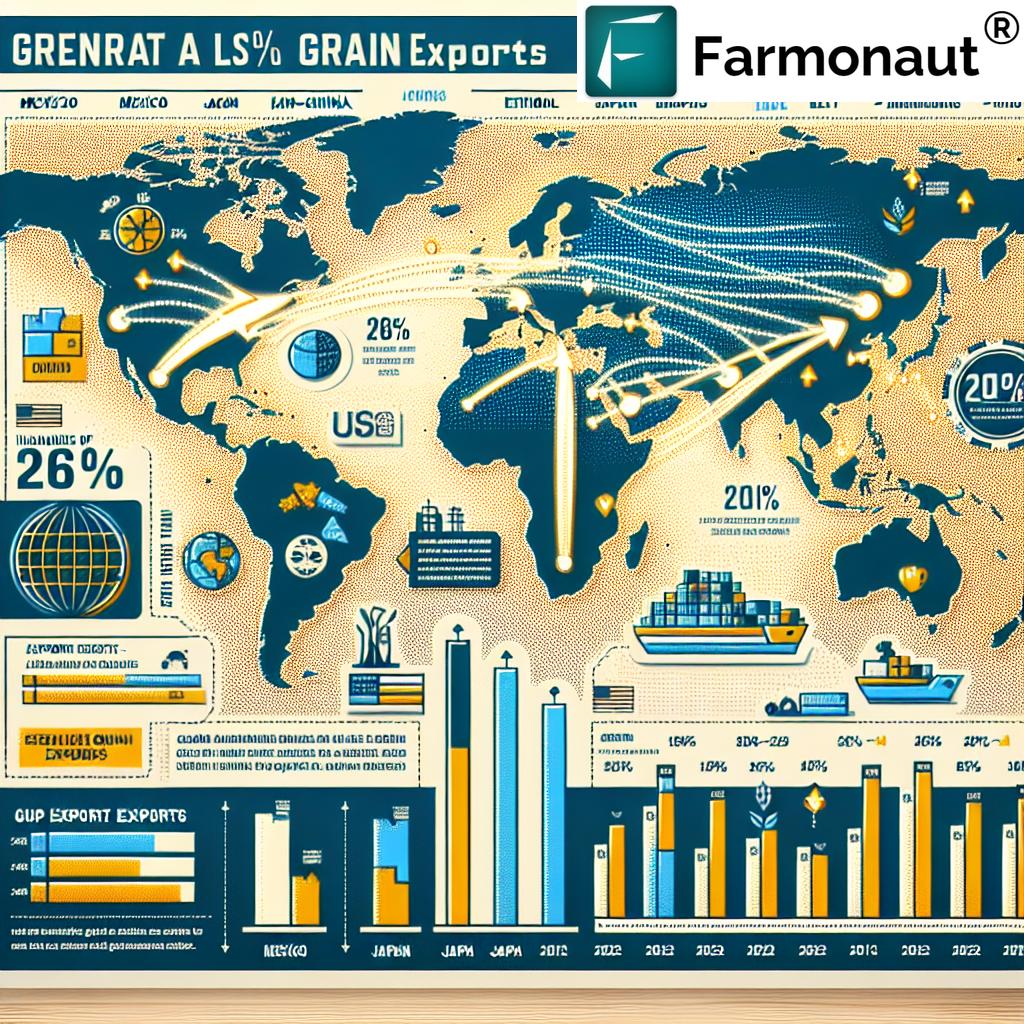Unlocking Saskatchewan’s 2024 Crop Report: Mixed Season Yields Surprising Results

The Saskatchewan Ministry of Agriculture has recently released its final Crop Report for 2024, offering a comprehensive overview of the province’s agricultural performance throughout the growing season. This Saskatchewan crop report 2024 reveals a year of unexpected twists and turns, culminating in surprising results that have caught the attention of farmers and industry experts alike.
A Season of Contrasts: The Mixed Growing Season in Saskatchewan
Tyce Masich, a crops extension specialist with the Saskatchewan Ministry of Agriculture based in Outlook, aptly described the 2024 growing season as a “mixed bag.” The mixed growing season in Saskatchewan presented a series of challenges and opportunities for farmers across the province.
- A wet and cool start in May and June
- Hot and dry conditions in July and August
- Early harvest completion by October
The season began with optimism as ample rainfall in May and June provided a promising start for many producers. However, the yield potential took a hit when July and August brought hot and dry weather, raising concerns among farmers. Despite these challenges, the drier conditions allowed for an early start to harvest, with most farmers completing their work by October.
Now, as winter approaches, farmers are hoping for additional moisture to replenish the soil before the cold sets in. This desire for more precipitation highlights the ongoing importance of topsoil moisture conditions in Saskatchewan’s agricultural success.
Crop Yields Saskatchewan: A Regional Perspective
The crop yields Saskatchewan experienced in 2024 painted a diverse picture across different regions of the province. Masich reported that yields for most crops were slightly above the 10-year average, while others fell below expectations.
- Higher yields: East-Central and Northeast regions
- Lower yields: Southwest and Southeast regions
The regional differences in yield can be attributed to varying precipitation levels throughout the growing season. This variability underscores the importance of accurate weather forecasting and soil moisture monitoring for optimal crop management.
For farmers looking to enhance their crop management strategies, the Farmonaut app offers valuable insights:
Crop Performance Saskatchewan: A Closer Look at Yields
The crop performance Saskatchewan witnessed in 2024 varied significantly across different crop types. Let’s break down the yields for various crops:
Pulse Crops: Exceeding Expectations
Pulse crops showed impressive performance, with pulse crop yields surpassing the 10-year average:
- Field peas: 36 bushels per acre
- Lentils: 1,306 pounds per acre
- Chickpeas: 1,319 pounds per acre
- Soybeans: 30 bushels per acre
Cereal Crops: A Mixed Bag
The cereal crop performance in Saskatchewan for 2024 was varied:
- Hard red spring wheat: 46 bushels per acre
- Other spring wheat varieties: 52 bushels per acre
- Durum: 33 bushels per acre
- Barley: 63 bushels per acre
- Oats: 79 bushels per acre
- Winter wheat: 46 bushels per acre
- Fall rye: 52 bushels per acre
Oilseed Crops: Challenges and Triumphs
The oilseed crop production in Saskatchewan faced some challenges in 2024:
- Flax: 23 bushels per acre (above 10-year average)
- Canola: 33 bushels per acre (below average)
- Mustard: 837 pounds per acre (below average)

Saskatchewan Grain Grades 2024: Quality Amidst Challenges
Despite the challenges posed by the mixed growing season, the Saskatchewan grain grades 2024 were remarkably positive. Masich reported that most high-acreage seeded crops in the province fell within the top two grading categories:
- Canola: 89% graded as 1 CAN, 9% as 2 CAN
- Hard red spring wheat: 60% graded as 1 CW, 31% as 2 CW
- Field peas: 43% graded as 1 CAN, 50% as 2 CAN
- Lentils: 40% graded as 1 CAN, 50% as 2 CAN
These impressive grain grades Saskatchewan achieved in 2024 are a testament to the resilience and skill of the province’s farmers, who managed to produce high-quality crops despite the challenging weather conditions.
For farmers interested in leveraging satellite technology for crop monitoring, Farmonaut offers a robust API solution:
Saskatchewan Hay and Silage Yields: A Boost for Livestock Producers
The Saskatchewan hay and silage yields in 2024 brought some good news for livestock producers. While silage yields were slightly below last year’s figures, hay yields showed improvement:
Silage Yields
- Provincial average: 6.37 tons per acre (down from 7 tons per acre in 2023)
- Above-average yields: East-Central and Southern regions
- Below-average yields: West-Central and Northern regions
Hay Yields (Dryland)
- Alfalfa: 1.78 tons per acre
- Brome hay: 1.79 tons per acre
- Green feed: 2.25 tons per acre
Hay Yields (Irrigated)
- Alfalfa: 3.36 tons per acre
- Brome hay: 3.25 tons per acre
- Green feed: 3.57 tons per acre
Most producers reported good to excellent hay quality in their first cut, with some even managing a second cut of similar quality. These improved hay yields Saskatchewan experienced in 2024 are crucial for supporting the province’s livestock industry.
Topsoil Moisture Conditions Saskatchewan: Looking Ahead
As farmers wrap up the 2024 season, attention turns to the topsoil moisture conditions Saskatchewan will carry into the winter months. The crop report indicates that current conditions are more favorable than they were at this time last year:
- Cropland topsoil moisture: 49% adequate, 44% short, 7% very short
- Hayland topsoil moisture: 42% adequate, 45% short, 13% very short
- Pasture topsoil moisture: 37% adequate, 45% short, 18% very short
These improved moisture conditions provide a cautiously optimistic outlook for the upcoming growing season. However, farmers remain hopeful for additional precipitation before winter to further bolster soil moisture levels.
For detailed weather analytics and soil moisture predictions, farmers can leverage the Farmonaut app:
Post-harvest Activities Saskatchewan Farmers: Preparing for the Future
As the harvest season concludes, Saskatchewan farmers are engaged in various post-harvest activities to prepare their fields for the next growing season:
- Harrowing fields
- Applying fall fertilizer
- Drying and storing grain
- Moving cattle back to winter pastures
- Hauling and storing bales before freeze-up
These post-harvest activities Saskatchewan farmers undertake are crucial for maintaining soil health, ensuring proper storage of harvested crops, and preparing livestock for the winter months.
Conclusion: Resilience in the Face of Challenges
The Saskatchewan crop report 2024 paints a picture of a resilient agricultural sector that has weathered a challenging and mixed growing season. Despite facing periods of both excessive moisture and drought, Saskatchewan farmers have managed to produce yields that are generally above the 10-year average, with particularly strong performances in pulse crops and some cereals.
The improved topsoil moisture conditions and generally high grain grades provide a positive outlook for the future. However, the variability in yields across different regions of the province underscores the ongoing importance of adaptive farming practices and the use of modern agricultural technologies.
As Saskatchewan’s agricultural community reflects on the lessons of 2024 and looks ahead to the next growing season, the resilience and innovation demonstrated this year will undoubtedly serve as a strong foundation for future success.
For farmers looking to enhance their crop management strategies with cutting-edge satellite technology, explore the Farmonaut API documentation:
By leveraging advanced tools and data-driven insights, Saskatchewan’s farmers can continue to adapt to changing conditions and maintain their position as leaders in Canadian agriculture.
















